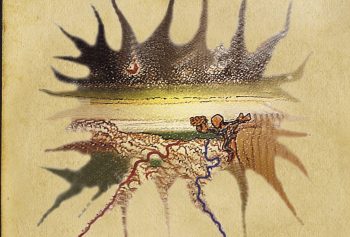The Intuitive Piano is an attitude. Both an attitude to the instrument and to life.
The key word, obviously, is intuition. Intuition is both an into-action and an into-here, that means being in the mood, living the present. At the base of this feeling there is passion, empathy towards the world, the instrument and what we have around.
The student arrives to me and I ask him “What do you want to play?”.
Everyone of us needs parameters, reference points, for this reason exists a theory. Thousands of them exist, everyone has his own interpretation. For this reason I’ve developed the Intuitive Piano, because it starts from the students, it evolves starting from everyone’s necessities and dreams.
That’s why we begin from the will, from our personal will. “What do you want to play? From where do you want to start?”
When they ask me which instruments do I play, I answer that I’m played from the piano. This “intuition”, in fact, is a sort of introspective resolution.
I’m of the idea that to the theory we should arrive or, at least, be accompanied. Any necessity you ask at the teacher that, with a longer lope every time, will follow us to our musical freedom.
To play an instruments certainly requires technique, exercise, constancy and even severity…. because it always seemed to me that to our selves, to play our selves, we always arrived at the end.
No. With me you start from yourself. The theory, the world, the songs we play, become our way to unveil and manifest our true self.
————————————————————–
The theory we refer to is the famous one, the one intuited from Pitagora, outlined by Bach and amplified by Beethoven.
Today, furthermore, with the flourishing of jazz, Pop music and experimentations, since the need and will of empathize with more listeners, the theory has apparently simplified.
A friend of mine last day said he even saw a classical music book written with chords… to underline how every note is understood as a relation, as a consequence.
When the first time we put our hands on a piano and play our first note, we enter a maze of references in which we can orientate through theory and, more important, we allow notes to unveil personal emotive relations we weren’t aware of, or that we didn’t yet found the way to express.
Let us be played than! Let our fingers become the way to color and give form to our emotions.
So the Intuitive Piano starts from intuition, from our ability in finding and creating new relations.
We start from the ear, from listening. “Is this relation harmonic? What kind of relation do this two sounds have?”
So, slowly, together, we reconstruct that chord, we understand in which tonality are we in and learn how to freely move throughout the required rules needed to obtain the desired result.
In this way it’s us that invent the rules, recognize them, accept them and prove them. In this way it’s the student the first who plays what he wants and how he wants it to be.
Musical freedom than, that starts from understanding our desires and develops through the musical expression of ourselves and our choices. The Intuitive Piano as a possibility of looking, choosing and changing… of growing.
————————————————————————
A Game that characterizes it’s self depending on our playing: more time we dedicate to it, more possibilities we have.
Tone, Tone, Half-tone, from Beatles to Erik Satie, from Jethro Tull to Yann Tiersen, passing through major scales to minors, understanding the meaning of the staff and the position of the notes.
A game with rules, with a theory that evolves and changes to your liking, depending on what we’re aiming for. Every chord that, if changed a little, opens different contexts and settings, with their own landscapes and horizons, with his shadows and meanings.
————————————————————————-
Choose a song and let’s start from there.

